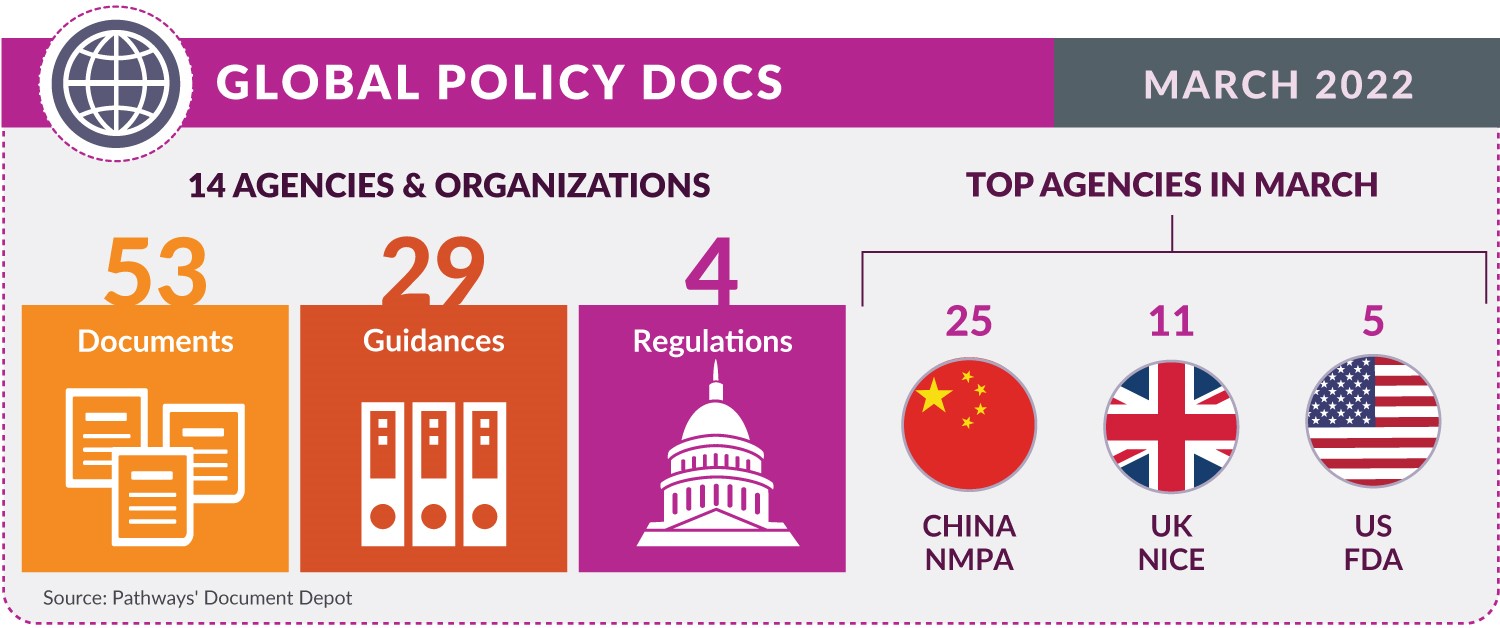ARTICLE SUMMARY:
In this month’s spotlight we look at two documents captured in Pathways’ Document Depot in March that seek to provide a solid foundation for conducting well-designed, ethical, and properly monitored clinical trials. One is from China, the other from Ethiopia.
Docs of the Month is a regular column highlighting key findings from Pathways’ Document Depot, a database of global medtech regulatory and policy official documents, including rules, guidance documents, memos, white papers, and more from national authorities, non-governmental groups, and global organizations.
Clinical trials are a crucial, and tightly controlled, element of the medtech ecosystem. Conducting trials that deliver meaningful results to support decision-making, while also ensuring that patient volunteers are protected, requires close attention to standards and best practices. There are some globally agreed-upon standards and expectations for conducting device trials, but every country also has its own context and rules. So it is helpful for regional agencies to spell out their fundamental expectations for investigations so they can be used support regulatory development and market access.
Two agencies have recently done just that. In China, the National Medical Products Administration (NMPA) issued a new “specification” document (link in Simplified Chinese) outlining its updated expectations for quality management practice of device clinical trials. And in Ethiopia, the Food and Drug Authority issued a guidance on device “Good Clinical Practices.
China Spells Out Roles, Adds IVDs
NMPA released its specification document in the context of some overarching reforms to its device regulatory framework that came to the fore last June. Those reforms established new rules for determining when clinical trials are necessary to support device registration, and added flexibilities for the types of data that might be necessary, among other changes. The new specifications will replace 2016 regulations addressing clinical trial standards for devices, incorporating elements from the recent reforms and making updates to clarify roles and responsibilities for conducting clinical trials.
In particular, the new document tries, according to NMPA, to underscore the importance of a trial sponsor’s quality management system and it makes clear that the quality system must address the entire clinical trial process, incorporating principles of risk management. The specification also includes new details defining the roles of testing institutions and researchers in the process.
Also noteworthy, the new specification includes IVD clinical trials in its scope, which was not the case for the 2016 regulation. In addition, the document specifies a timeline for adverse event reporting from device trials in China—specifically, setting a seven-day deadline (from when the sponsor is informed) to report deaths or life-threatening risks and a 15-day deadline for non-life-threatening issues. And NMPA says it removed what it deemed were unnecessary requirements related to device trials to streamline the process. For instance, it removed the requirement that trials must be conducted at two or more sites.
The NMPA document also explicitly draws on the work of the International Medical Device Regulators Forum (IMDRF) to establish globally harmonized expectations for device clinical investigations. It also makes full reference to the ISO 14155 standard for good clinical practice in medical device trials and the ISO 10916 standard for IVD trials.

Ethiopia GCPs
Ethiopia is not as far along in building up and modernizing its device regulatory infrastructure as NMPA is in China. Recently, lawmakers in Ethiopia have taken legal steps to further distinguish oversight of devices from that of drugs. And that may be a key objective of its recently published “Guideline for Medical Devices Good Clinical Practice.” Ethiopia already had a 64-page GCP document published in 2018 addressing drugs, vaccines, and dietary supplements, as well as diagnostics and devices. The new document dedicates 42 pages purely to GCP for devices (not including IVDs).
The documents from China and Ethiopia are two of 53 that were captured in Document Depot in March. China’s NMPA, not atypically, was the most active last month, with guidelines published for an array of technology areas, including in the digital health, diagnostics, and orthopedic sectors.

